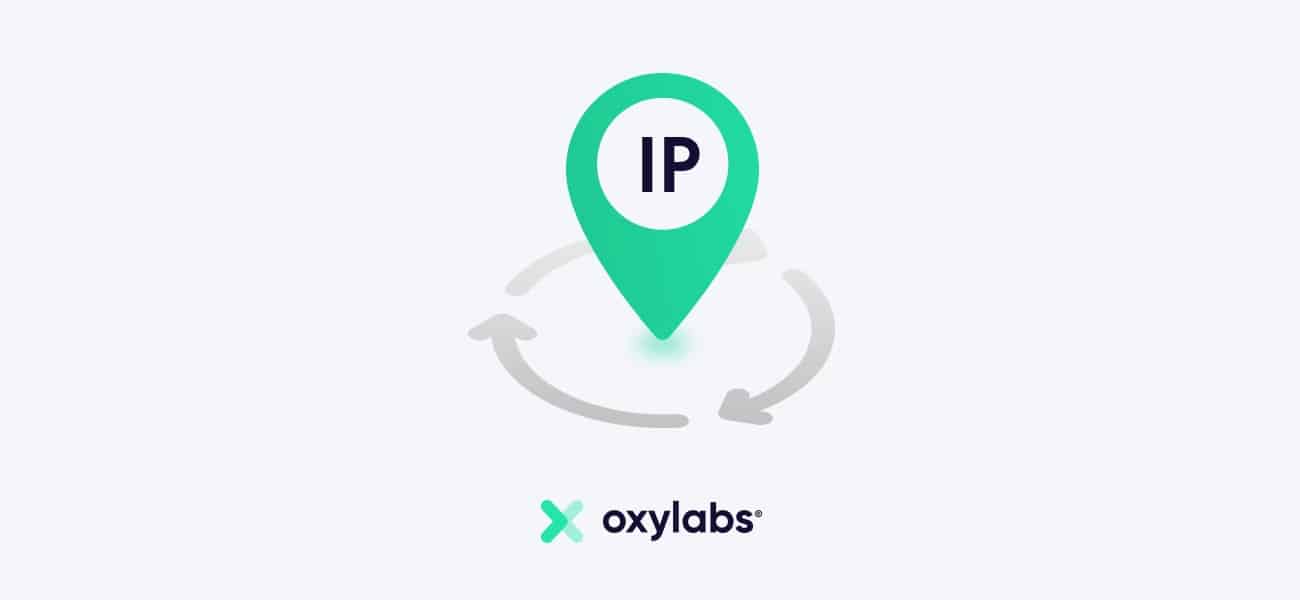You may have come across the term “rotating IPs,” but explaining what IP address rotation is and why it’s important can be challenging. To fully grasp its purpose, let’s dive into what IP rotating entails.
What is IP address rotation?
To start, let’s cover the basics: An IP address is a unique identifier assigned to a device connected to the internet, with two types – IPv4 and IPv6.
IP rotation involves the random or scheduled distribution of IP addresses to a device. When connected via an Internet Service Provider (ISP), an IP address is automatically assigned from a pool of IPs. ISPs rotate dynamic IP addresses (static don’t rotate) because they typically have more users than IP addresses available.
When a user disconnects, the ISP returns their IP address to the pool. Additionally, there are proxies available, such as IPv6 or IPv4 proxies, that are designed to work with each protocol to enhance security and performance. Learn more about their specifications.
What is proxy rotation?
ISPs automatically rotate IP addresses, which is usually transparent to their users. However, in certain online scenarios, users may intentionally rotate their IP addresses.
One useful tool for managing multiple connections from a single device and simplifying web crawling and data scraping is rotating proxies. There are various methods for rotating IP addresses, some requiring manual effort, such as with Chrome proxies (learn how to use proxies in Chrome).
At Oxylabs, we offer a Proxy Rotator that automates the process for you. It operates by randomly rotating IP addresses on each request. The client receives one entry node, which serves as a static address to access the proxy list.
Choosing the Right Proxy for Scraping Product Information
Choosing the right type of proxy for scraping product information depends on your web scraping needs. If you need to access a specific website multiple times, a static proxy is ideal. However, if you need to access multiple websites simultaneously, a rotating proxy is a better option. It’s also essential to choose a reliable proxy provider that offers a high-quality proxy pool and ensures anonymity and fast connection speed. By selecting the right type of proxy and provider, you can optimize your web scraping process and gather product information efficiently.

Why rotate proxies?
When it comes to web scraping, a common challenge is avoiding being blocked by websites while trying to gather data. There are several techniques that can help prevent these blocks, and one such technique is proxy rotation. This method can help scrapers bypass anti-scraping measures by mimicking the behavior of multiple users, increasing the chances of going undetected while gathering large amounts of data.
Proxy rotation is widely used in various industries. For instance, SEO firms use proxies that automatically rotate to check keyword rankings from different locations, such as Brazil or Germany. Data intelligence companies also rotate proxies to scrape websites for analytic and performance purposes. Corporate firms may rotate IP addresses to eliminate regional presentation and price gouging. Data triangulation companies validate data through IP rotation, and IT companies rotate IP addresses for their outgoing bots to maintain network loads.
Overall, proxy rotation can help exceed request limits and eliminate geo-restrictions.
Methods used to rotate IP addresses
Internet Service Providers (ISPs) use several methods to rotate IP addresses, including pre-configured IP rotation, specific IP rotation, random IP rotation, and burst IP rotation.
Pre-configured IP rotation involves assigning a new IP address to the user at specified intervals, while specific IP rotation allows the user to choose the IP address for an outgoing connection. In random IP rotation, a randomly selected address is assigned to each new outgoing connection, without the user’s control over the assigned address.
Burst IP rotation is a method where the ISP assigns new IP addresses after a certain number of connections. For instance, if the specified number is 10, a new IP address will be given to the eleventh connection after every ten connections are initiated.
How to rotate an IP address?
An internet user who wants to automate proxy rotation can use a tool like our Proxy Rotator, which rotates the proxy IP address automatically using the random IP rotation method. Here’s how it works:
First, add the proxy rotator to your proxy plan by logging in to your account or contacting us. Then, you will get a single endpoint assigned to your proxy list.
With every request you make, the endpoint will fetch a different IP address. When you purchase Datacenter Proxies, you will receive detailed documentation that will help you get started. The documentation contains answers to frequently asked questions and more details on how to set up the proxy rotator.
Using a dedicated proxy rotating service like our Proxy Rotator can help you get past blocks when web scraping and reduce the risk of incorrectly configuring the IP rotation process. Such errors could result in the overuse of some proxies and lead to bans.
Note that our Residential Proxies do not require a proxy rotator since they are self-rotating. However, we highly recommend using rotation for Datacenter Proxies as it reduces the chances of being blocked even further.
Conclusion
Now that you understand the benefits of combining proxies and IP rotation and their purpose, we highly recommend implementing a high-quality proxy rotation solution if you are performing data scraping and web crawling tasks. This will increase your success rates and protect your proxy pool infrastructure.
If you enjoyed this blog post, we suggest reading about the difference between static and rotating proxies or using a static proxy for brand protection. Please feel free to contact us if you have any questions.

